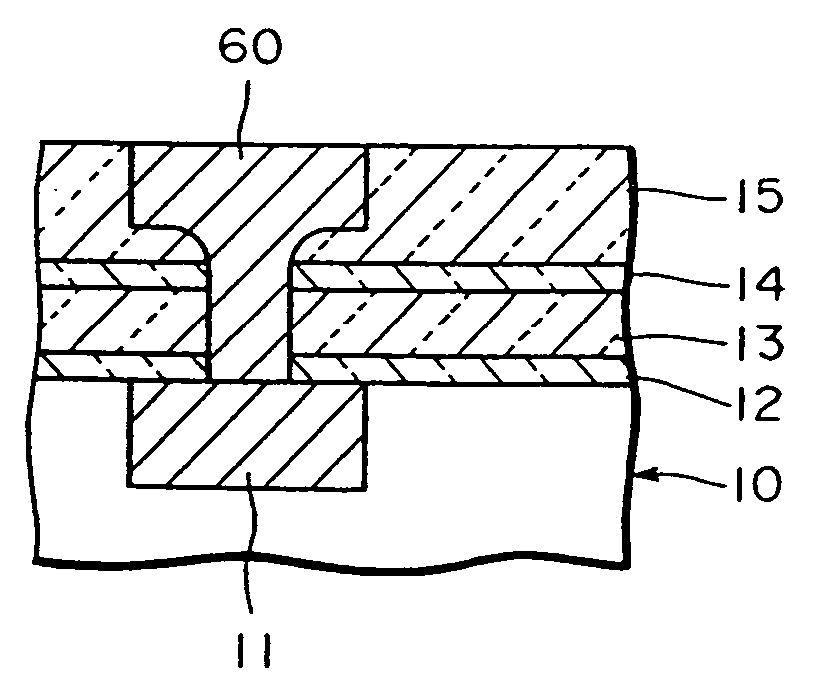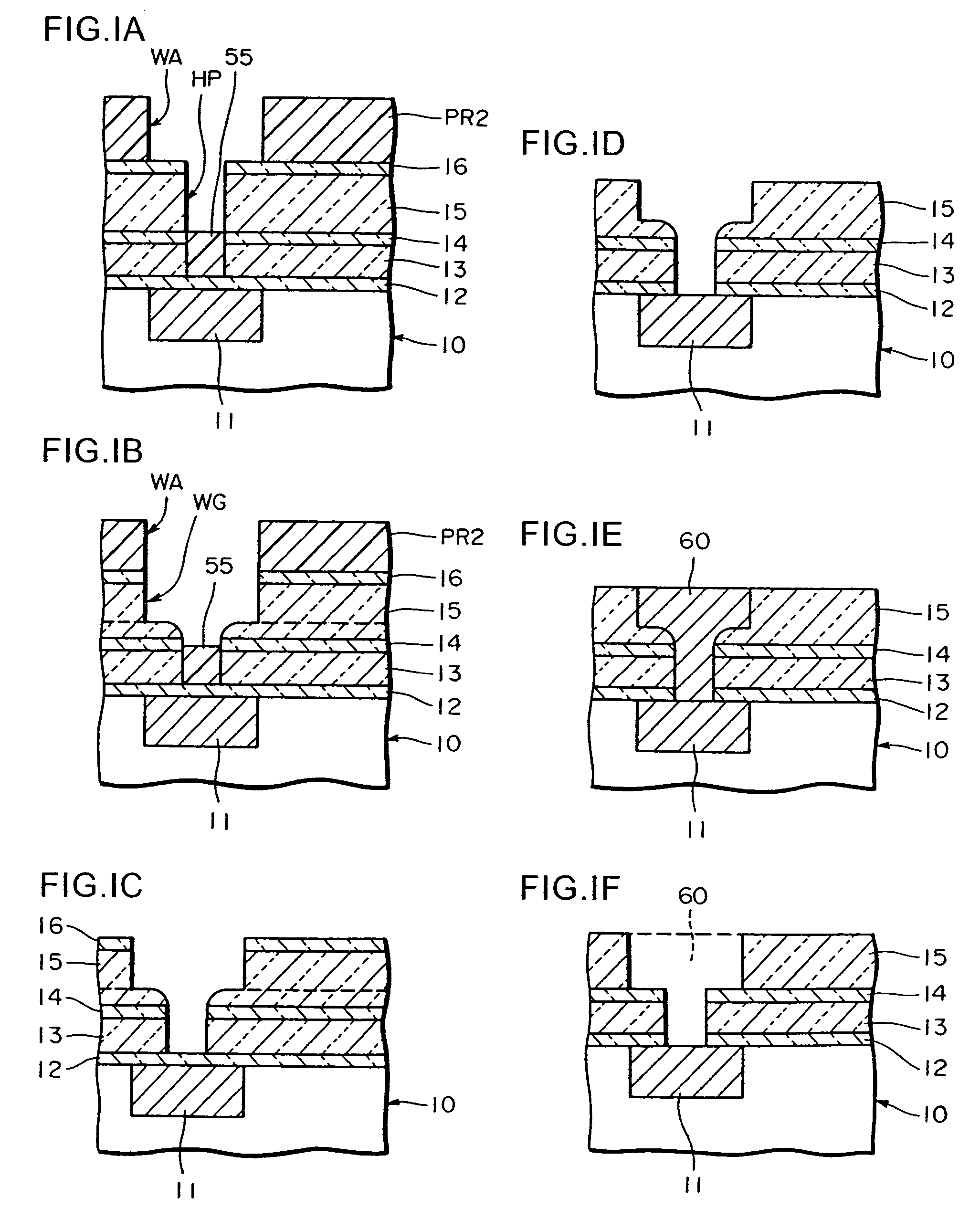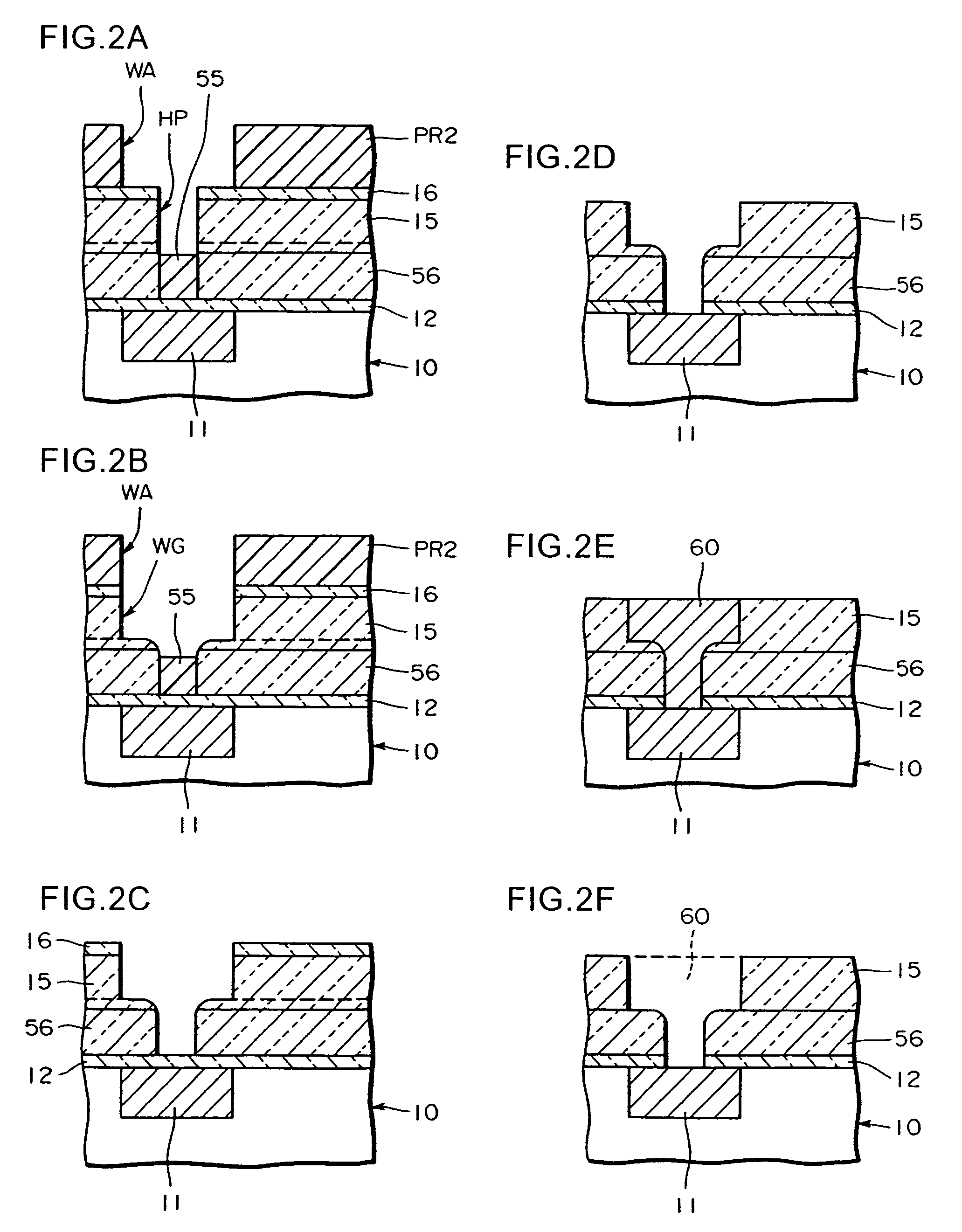Semiconductor device with dual damascene wiring
a technology of damascene and semiconductor devices, which is applied in the direction of semiconductor devices, semiconductor/solid-state device details, electrical apparatus, etc., can solve the problems of low signal transmission speed, and difficult etching of cu, so as to achieve less damage to the underlying conductive region
- Summary
- Abstract
- Description
- Claims
- Application Information
AI Technical Summary
Benefits of technology
Problems solved by technology
Method used
Image
Examples
first embodiment
[0115]Similar to the embodiment shown in FIGS. 1A to 1E, after a resist pattern is formed on the antireflection film 16, the antireflection film 16, second and first interlayer insulating films 15 and 56 are anisotropically etched to form a via hole HP. The resist pattern is thereafter removed, and a protective filler 55 of organic compound is disposed on the bottom of the via hole HP. Similar to the first embodiment, the protective filler 55 is formed lower than the upper surface of the first interlayer insulating film 56. The first and second interlayer insulating films 56 and 15 have similar etch rates, as described above.
[0116]A resist pattern PR2 having an opening WA corresponding to a wiring trench pattern is formed on the antireflection film 16.
[0117]As shown in FIG. 2B, by using the resist pattern PR2 having the opening WA, the antireflection film 16 and second interlayer insulating film 15 are etched. The second interlayer insulating film 15 is etched through controlled etc...
second embodiment
[0130]In the second embodiment, the lower interlayer insulting film is made of plasma SiO2. A plasma SiO2 film has a low etch rate but its dielectric constant is not so low although it is lower than SiN. In order to further reduce the capacitance between upper and lower wiring layers, it is desired to use material having a much lower dielectric constant.
[0131]FIGS. 3A to 3E show the structure of an interlayer insulating film made of a plasma SiO2 film capable of suppressing abnormal etching having a limited thickness and sandwiched between fluorine containing silicon oxide films.
[0132]As shown in FIG. 3A, on an underlie 10 having a conductive region 11, a lamination structure is formed having: an etch stopper layer 12 made of SiN or the like; a first interlayer insulating film 13 made of fluorine containing silicon oxide; an etch suppressing insulating film 54 made of plasma SiO2; a second interlayer insulating film 15 made of fluorine containing silicon oxide; and an antireflection...
PUM
 Login to View More
Login to View More Abstract
Description
Claims
Application Information
 Login to View More
Login to View More - R&D
- Intellectual Property
- Life Sciences
- Materials
- Tech Scout
- Unparalleled Data Quality
- Higher Quality Content
- 60% Fewer Hallucinations
Browse by: Latest US Patents, China's latest patents, Technical Efficacy Thesaurus, Application Domain, Technology Topic, Popular Technical Reports.
© 2025 PatSnap. All rights reserved.Legal|Privacy policy|Modern Slavery Act Transparency Statement|Sitemap|About US| Contact US: help@patsnap.com



